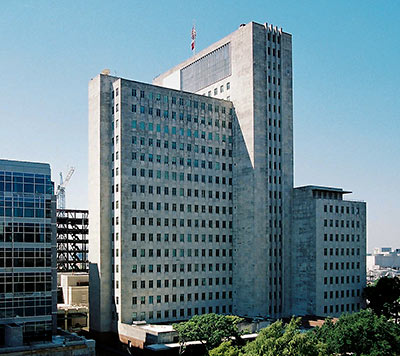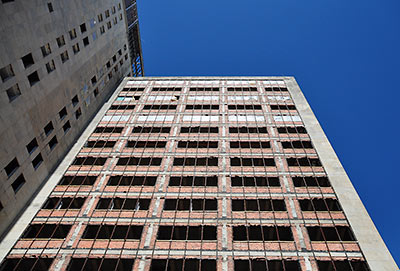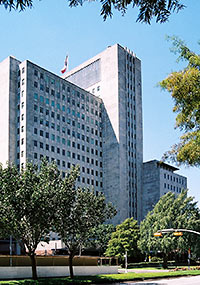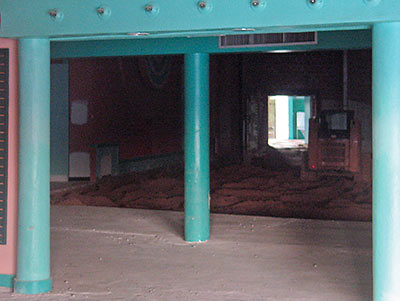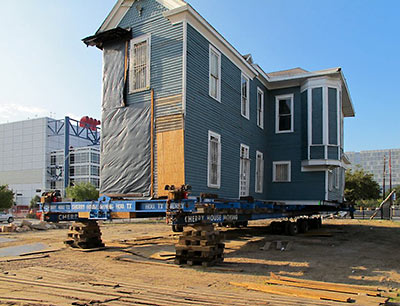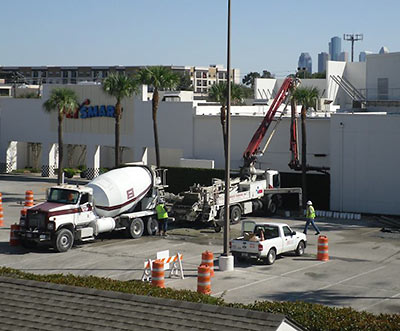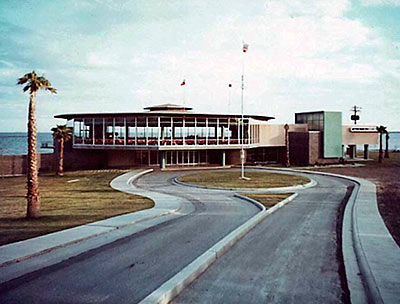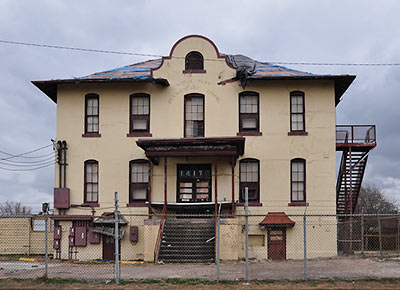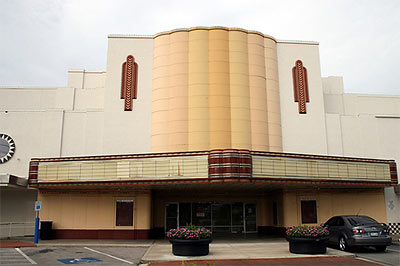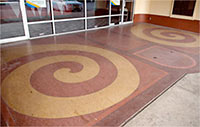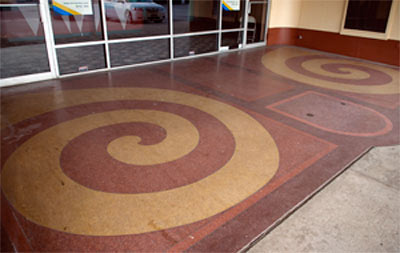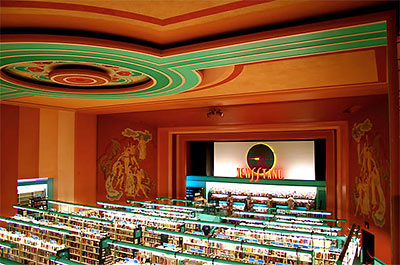
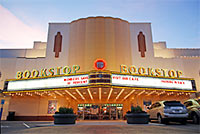 Isn’t Weingarten Realty going to preserve some of the interior of its landmarked Alabama Theater as it makes the space ready for Trader Joe’s — or if that deal somehow falls through, some other tenant? Sure: The lobby and theater ceilings are being left alone, and a decorative plaster “medallion” on the north wall is supposed to remain in place — though it’ll be stripped of some outer layers. An upper section of the balcony will also stay, along with some light fixtures in the lobby. But other than those items, the entire 1939 theater space — or rather, what’s left of it after Weingarten encased the auditorium’s preserved sloped floor in concrete last year — is being gutted, according to plans drawn up for the project by Heights Venture Architects. A permit for the conversion of the historic Art Deco building to a retail “shell” was granted by the city earlier this week.
Isn’t Weingarten Realty going to preserve some of the interior of its landmarked Alabama Theater as it makes the space ready for Trader Joe’s — or if that deal somehow falls through, some other tenant? Sure: The lobby and theater ceilings are being left alone, and a decorative plaster “medallion” on the north wall is supposed to remain in place — though it’ll be stripped of some outer layers. An upper section of the balcony will also stay, along with some light fixtures in the lobby. But other than those items, the entire 1939 theater space — or rather, what’s left of it after Weingarten encased the auditorium’s preserved sloped floor in concrete last year — is being gutted, according to plans drawn up for the project by Heights Venture Architects. A permit for the conversion of the historic Art Deco building to a retail “shell” was granted by the city earlier this week.


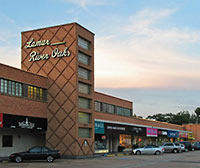 The Greater Houston Preservation Alliance’s days as a scrappy preservation organization housed in offices in the historic 1929
The Greater Houston Preservation Alliance’s days as a scrappy preservation organization housed in offices in the historic 1929 